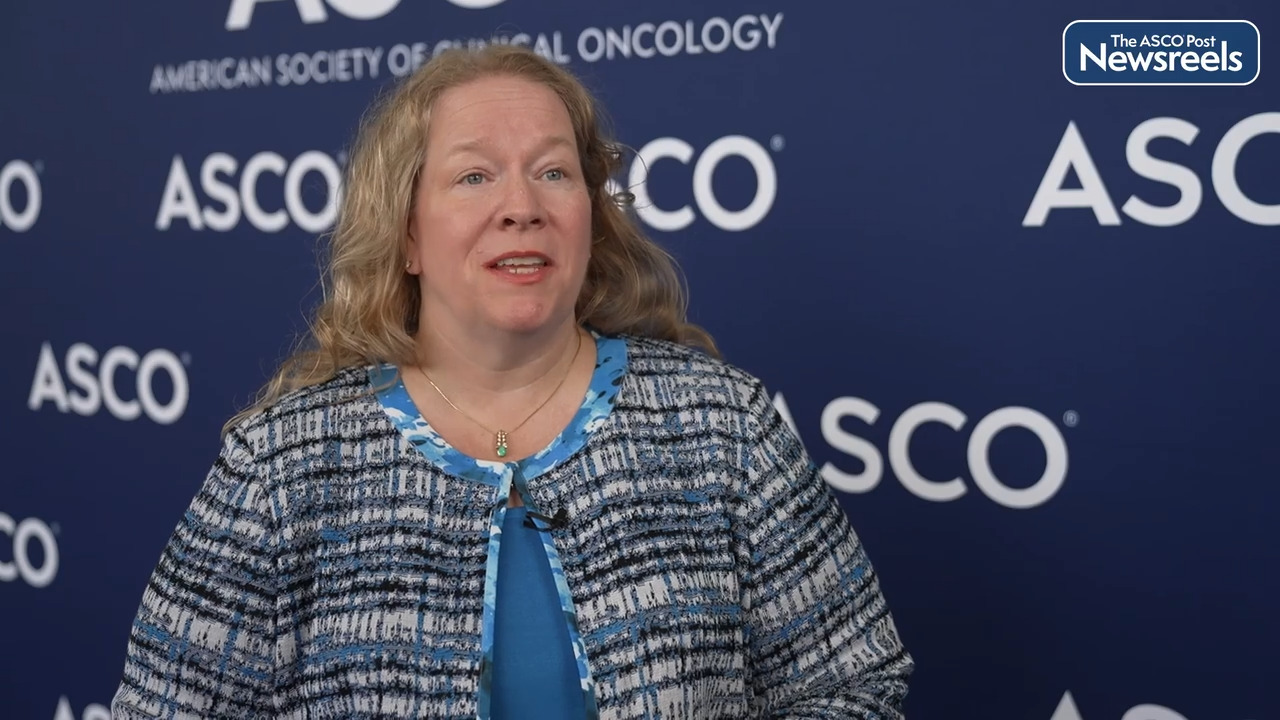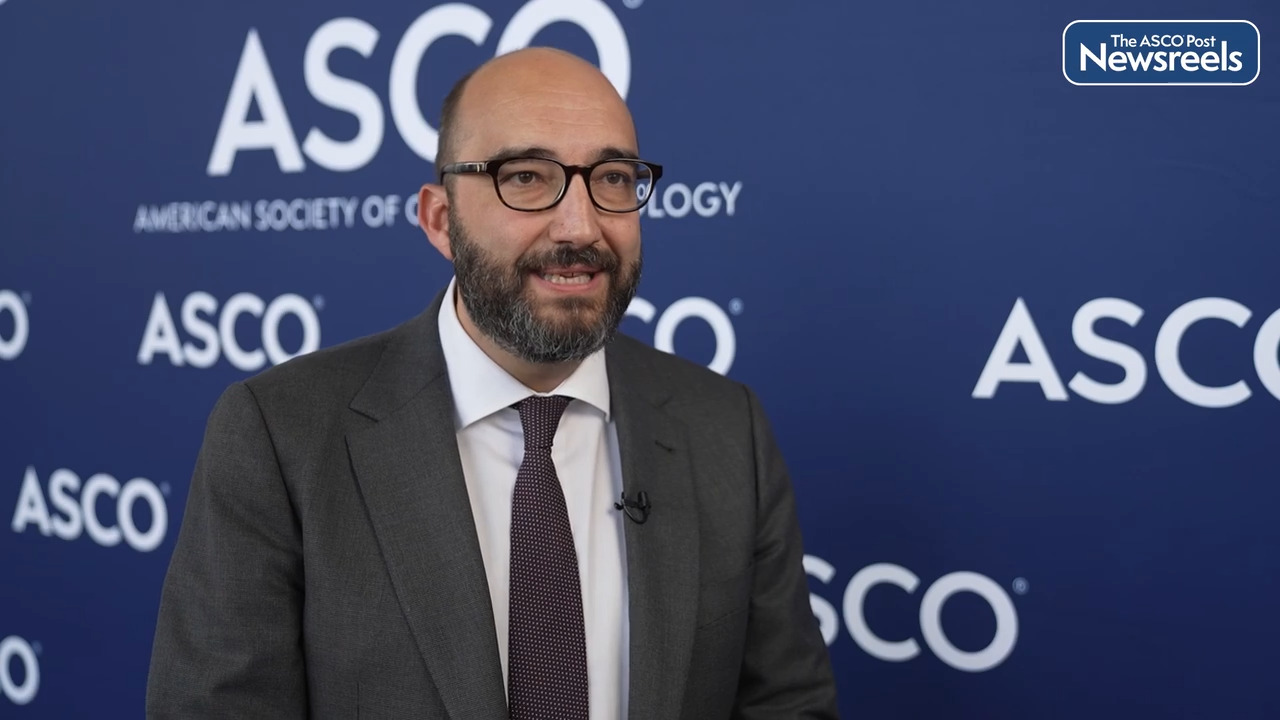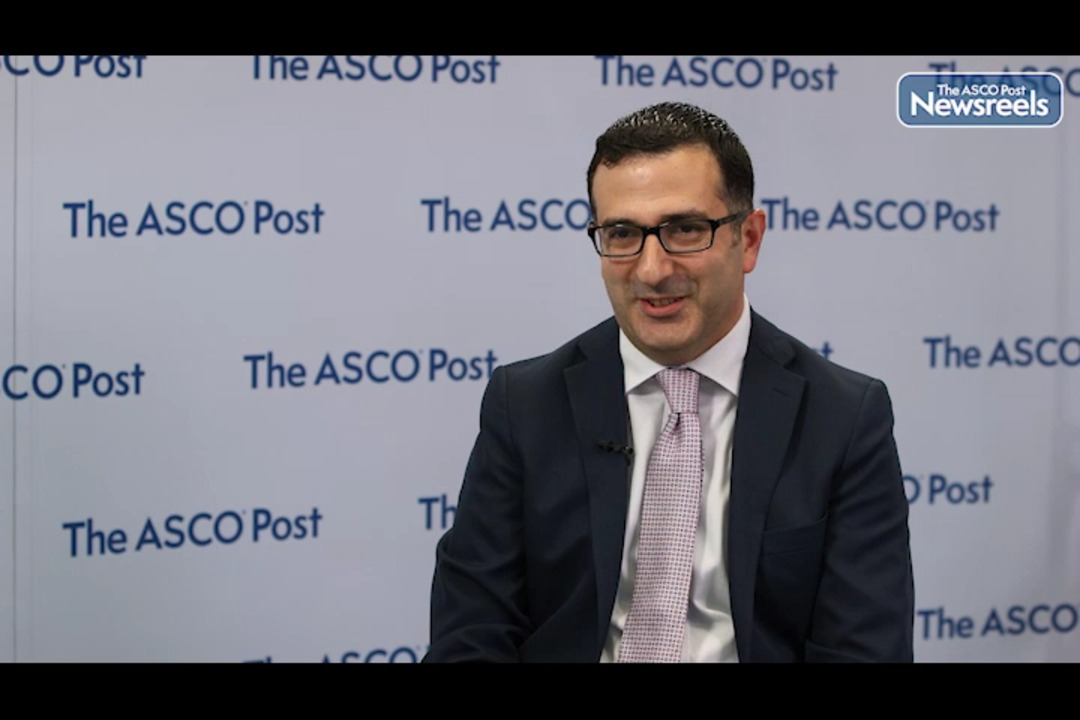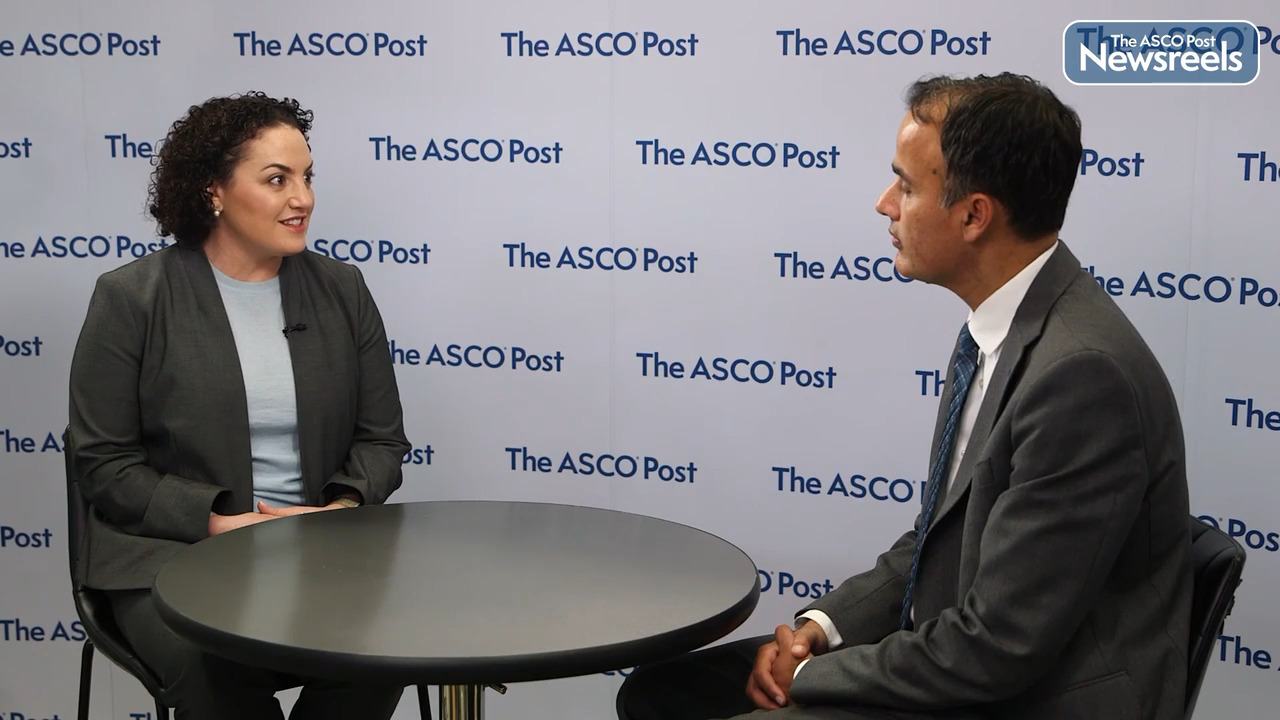Transcript
Disclaimer: This video transcript has not been proofread or edited and may contain errors.
Tycel J. Phillips:
Dr. Herrera, thank you for being here. Talk us through the subset analysis of the POLARIX study.
Alex F. Herrera:
Absolutely. So, POLARIX, as you know, was a randomized, phase 3 trial in previously untreated diffuse large B-cell lymphoma patients, comparing the old standard R-CHOP to polatuzumab vedotin combined with R-CHP, so dropping vincristine. Now, a really exciting part of the study is that we collected blood both at baseline and at different time points to assess circulating tumor DNA, this exciting biomarker that we have, to try to understand the depth of response in real time on studies.
Tycel J. Phillips:
Sure.
Alex F. Herrera:
So, this particular analysis was looking at patients who had paired samples that were assessed for ctDNA, looking at pair-based samples from baseline and cycle five day one or baseline and end of treatment.
Tycel J. Phillips:
Okay.
Alex F. Herrera:
So, what we found is that when you looked at both cycle five day one and end of treatment, patients who had cleared their ctDNA had better outcomes than patients who did not, if you pooled the two arms together. That was kind of the most significant finding, really validating this concept that circulating tumor DNA can be used as a prognostic marker, and potentially maybe someday to guide therapy or to at least design clinical trials where we can test that.
The other interesting thing that we found was if you looked at patients in a complete response on a PET scan and then you looked at patients who had their clear ctDNA, actually the patients in the pola-R-CHP arm actually did a little better than the patients in the R-CHP arm. So, maybe that suggests that patients who received pola-R-CHP had deeper responses. I suppose the other side of that though is that the assay couldn't identify those deeper responses.
Tycel J. Phillips:
I mean, so with this information, and we could both be very transparent, it's been a very sort of controversial positive study, which just seems to be the trend lately.
Alex F. Herrera:
Yeah.
Tycel J. Phillips:
Sort of, I guess what information can we take forward as we sort of look at this? Is it this we just need a better assay to predict who's a better patient, who may get more responsible pola-R-CHP? Or is there something else we should be doing differently?
Alex F. Herrera:
That's a great question. I think based on these data we have, in a prospective way, validated this idea that we can use circulating tumor DNA as a prognostic marker. For this particular study, it doesn't look like this particular assay distinguished the two arms in terms of the PFS benefit that we observed with pola-R-CHP.
Tycel J. Phillips:
Sure.
Alex F. Herrera:
But I think it serves as a really good foundation to think about how we can design ctDNA-guided trials, right?
Tycel J. Phillips:
Okay.
Alex F. Herrera:
It kind of was the proof of concept. "Okay, we looked at earlier time points previously when we presented it at ASH, a certain log drop, certainly separated the curves. Now ctDNA clearance at the end of treatment separates curves. So, can we build on that to modify therapy? Can we intervene on patients who have a suboptimal response? Can we deescalate therapy in patients who have good responses?" So, I think it helps kind of build the foundation for ctDNA-guided research in the future.
Tycel J. Phillips:
Which, I think we all hope is the key moving forward so we can move beyond PET scans.
Alex F. Herrera:
Right, right. Yeah, I mean, PET scans... I mean, look, they were certainly an advance compared to what we were doing with CT scans-
Tycel J. Phillips:
Very much so.
Alex F. Herrera:
But they're imperfect, right?
Tycel J. Phillips:
Yes.
Alex F. Herrera:
And so maybe even we arrive at some combination of PET and ctDNA, there are different ways to approach it. But I think we are all hopeful that we will sharpen our tools, including even the ctDNA assays, to get at an assay that can really help us, both with prognostic information, but also to guide therapy.
Tycel J. Phillips:
I mean, I think this is all really exciting information and can't wait to see what the research moves and brings us in the future. So, thank you again for taking time to speak with us this afternoon.
Alex F. Herrera:
My pleasure.
Tycel J. Phillips:
All right.
Alex F. Herrera:
Thank you.





